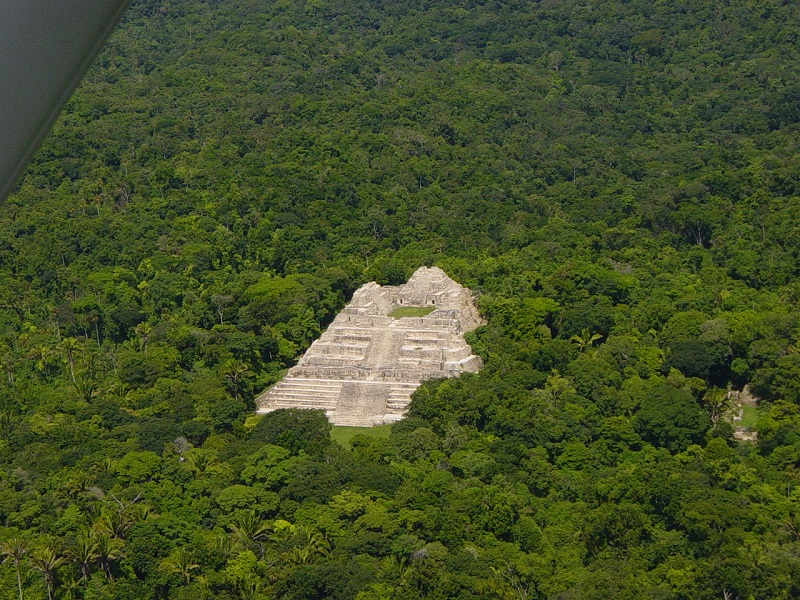Belize Mayan Ruins: 6 Impressive sites to visit in 2021
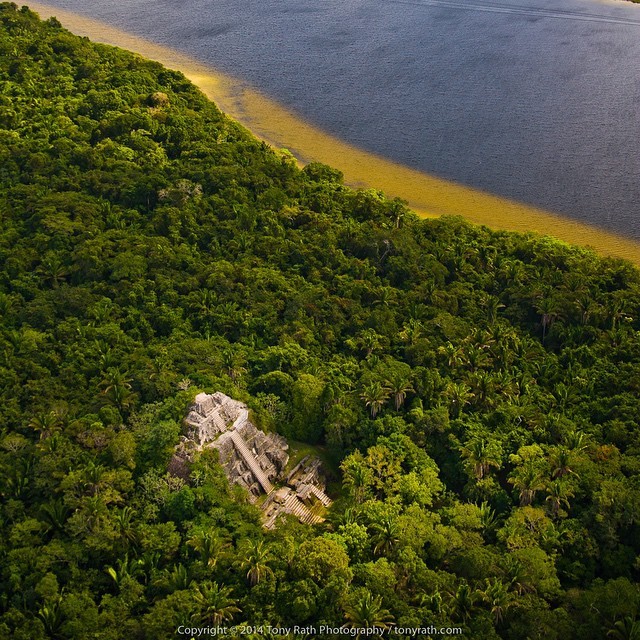
Belize’s first and most enduring inhabitants, the Maya, left a rich legacy of art, science and mathematics that continues to unfold and astound us. Much of this ancient knowledge was lost when Spanish conquistadors laid waste to the extensive Maya libraries and administrative centers, but, fortunately, the Maya recorded parts of their history and predictions in stone inscriptions that can be seen today in stelae and the remains of elaborate cities, buildings and temples that survived centuries of jungle encroachment.
We have listed 6 of the most impressive Mayan Ruins found in Belize:
1. Xunantuinch
“maiden of the rock” or “stone woman”
Xunantunich Maya site is situated on the Western Highway across the river from the village of San Jose Succotz. It can be reached by ferry daily between 8 am and 5 pm. This site is less than one mile from some lovely rapids of the Mopan River and provides an impressive view of the entire river valley. Xunantunich is a Classic Period ceremonial center. The site core occupies only 300 square meters but the periphery covers several square kilometers. In Group A, Structure A-6 (El Castillo) rises 130 feet above plaza level making it one of the tallest buildings in Belize.
2. Altun Ha Mayan Ruins
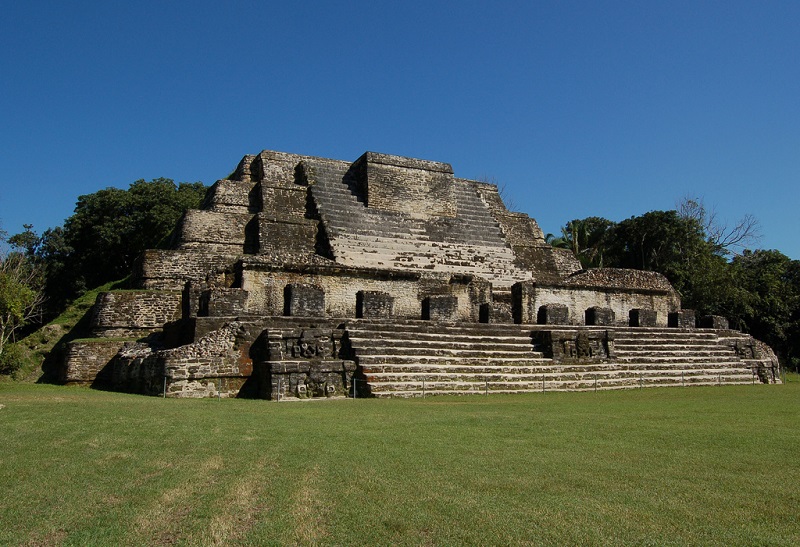
“Rockstone Pond”
Altun Ha is located 31 miles north of Belize City on the Old Northern Highway. A two-mile dirt road connects the main road to the site. The area around the Altun Ha is rich in wildlife including armadillos, bats, squirrels, agouti, paca, foxes, raccoons, coati, tyra, tapir and the white-tailed deer. Two hundred species of birds have been recorded and there are large crocodiles that inhabit the Maya-made water reservoir.
3. Lamanai Mayan Ruins

“Submerged Crocodile”
Lamanai is the Maya word for “submerged crocodile.” The site’s name – “Lamanay” or “Lamayna” was recorded by Franciscan missionaries in the seventeenth century. It is one of the only sites retaining its original name and is among one of Belize’s largest ceremonial centre. The name Lamanai helps to explain the numerous crocodile motifs at the site. Crocodile effigies appear on figurines, vessel decorations, and on the large headdress on a limestone mask at one of the principal structures at the site.
4. Caracol Mayan Ruins
“Snail”
Located on the western edge of the Maya Mountains within the Chiquibul Forest Reserve, Caracol lies on a high plateau of 500m above sea level that drops into a deep valley to the northwest and rises into hilly terrain to the southwest. The site was discovered in 1938 by Rosa Mai, a logger looking for mahogany. The temple “Caana” rises 42 meters above plaza level and to this day is the largest man-made structure in Belize. Over 70 formal tombs have been excavated and many hieroglyphic texts have been found on stelea, altars, and ball court markers, capstones and wall facades. Ocellated Turkeys are one of the many wildlife species that you will find in this area. This region is also known as an excellent location for birding.
5. Lubaantun
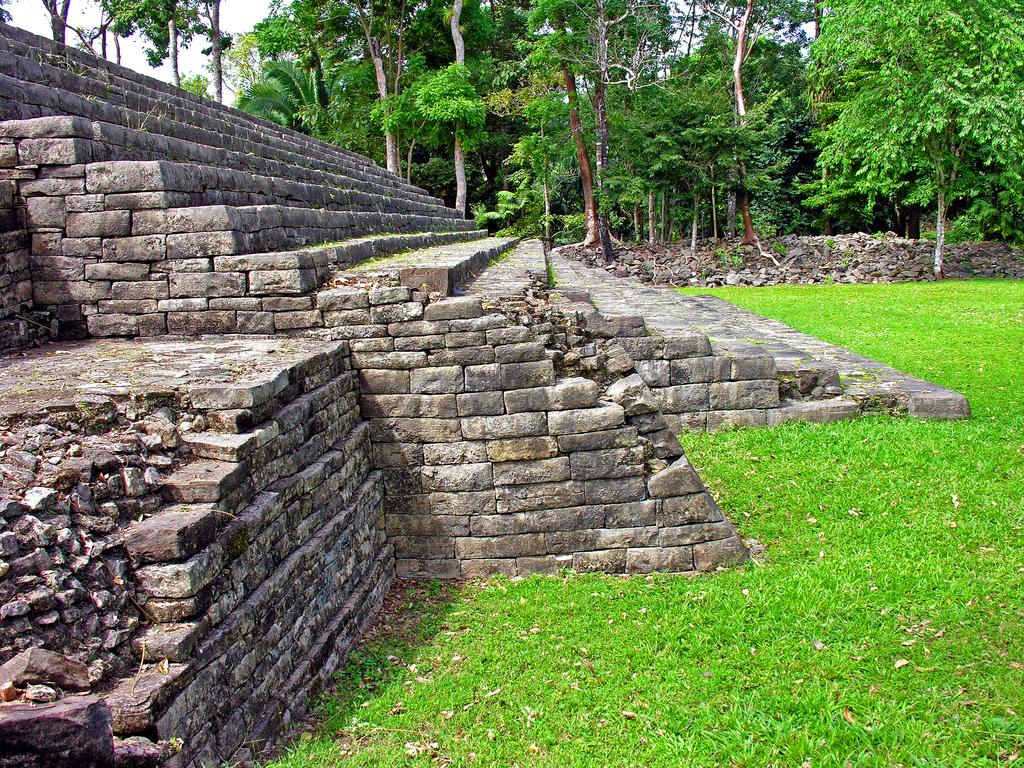
“Place of the Fallen Stones”
This Late Classic ceremonial center is noted for its unusual style of construction distinctive of southern Belize. The large pyramids and residences are made of dresses stone blocks with no mortar binding them together. The buildings on top of the pyramids were made from perishable materials rather than masonry and hence do not remain. The name is Maya for “Place of Fallen Stones.” The most famous crystal skull was allegedly discovered here in Lubaantun by a 17-year old Anna Mitchell-Hedges in 1924 or 1927 while accompanying her adoptive father on an excavation of the ancient Mayan city.
Cahal Pech Mayan Ruins
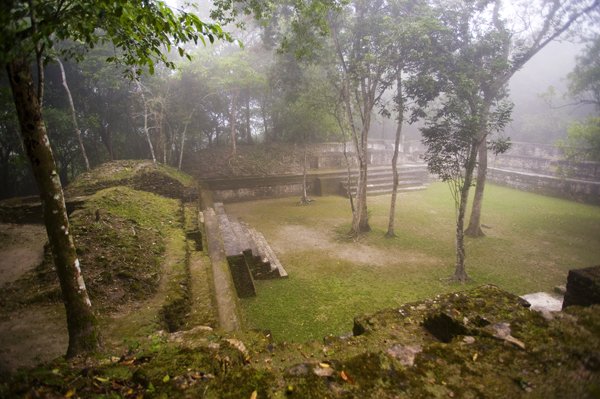
“Place of Ticks”
The Cahal Pech Maya site and Visitor Center are located in the Cayo District on a hill overlooking the beautiful town of San Ignacio. Its closeness to town and the vast contrast from town life to rich jungle environment make Cahal Pech a unique place to visit. The site center is made up of 34 structures located around several courtyards, including temple pyramids and residential buildings. The tallest structure here is 23.5 meters (77 feet) high. There are also 2 ballcourts, 8 stelae and 1 altar. Preliminary investigations carried out in 1988 revealed that Cahal Pech was settled by 1200 B.C. and abandoned around A.D. 850. This makes Cahal Pech one of the earliest Maya sites in the Belize region of the Maya lowlands, contemporaneous with Cuello in the north. A carved monument discovered at Cahal Pech is also the earliest carved stelae yet discovered in the eastern Maya lowlands.
